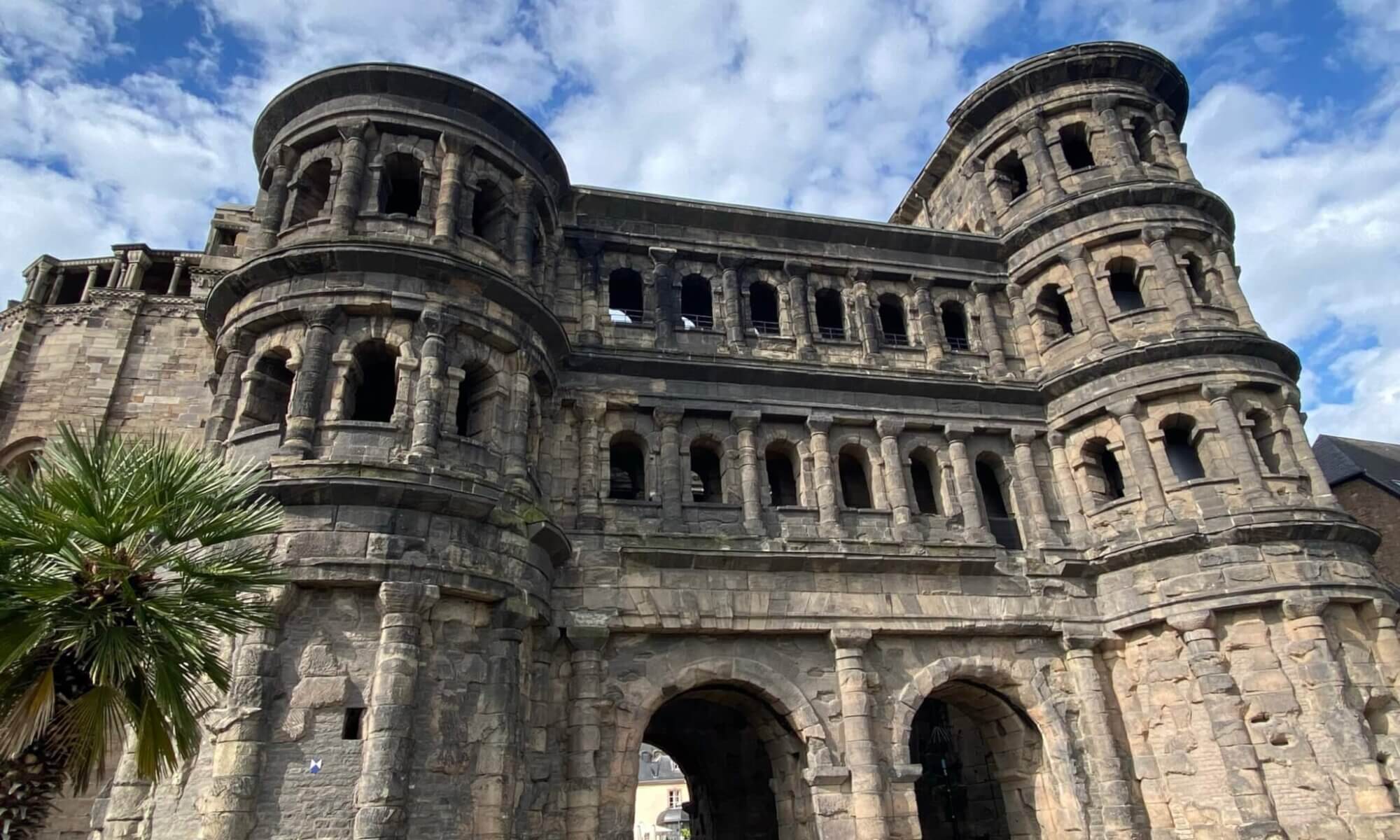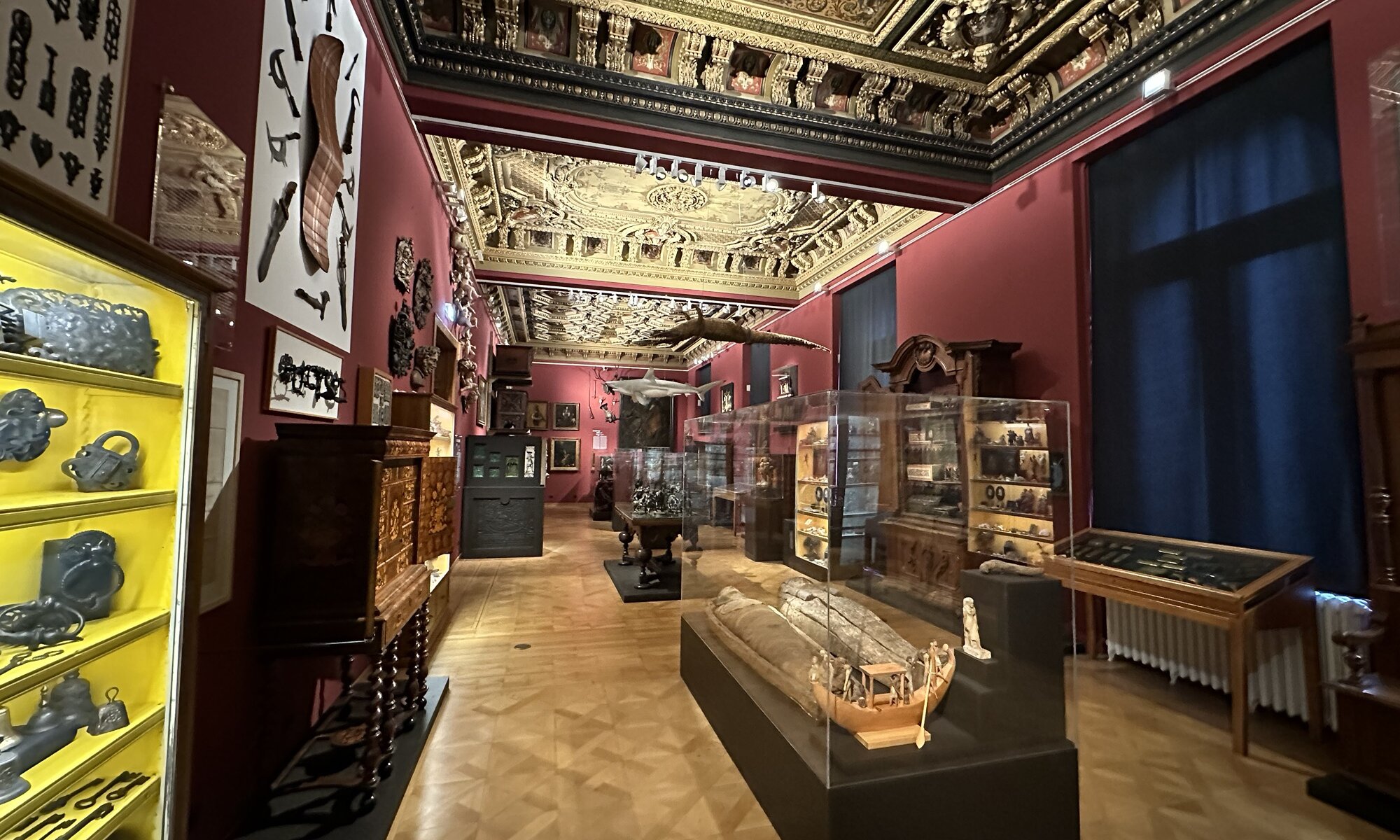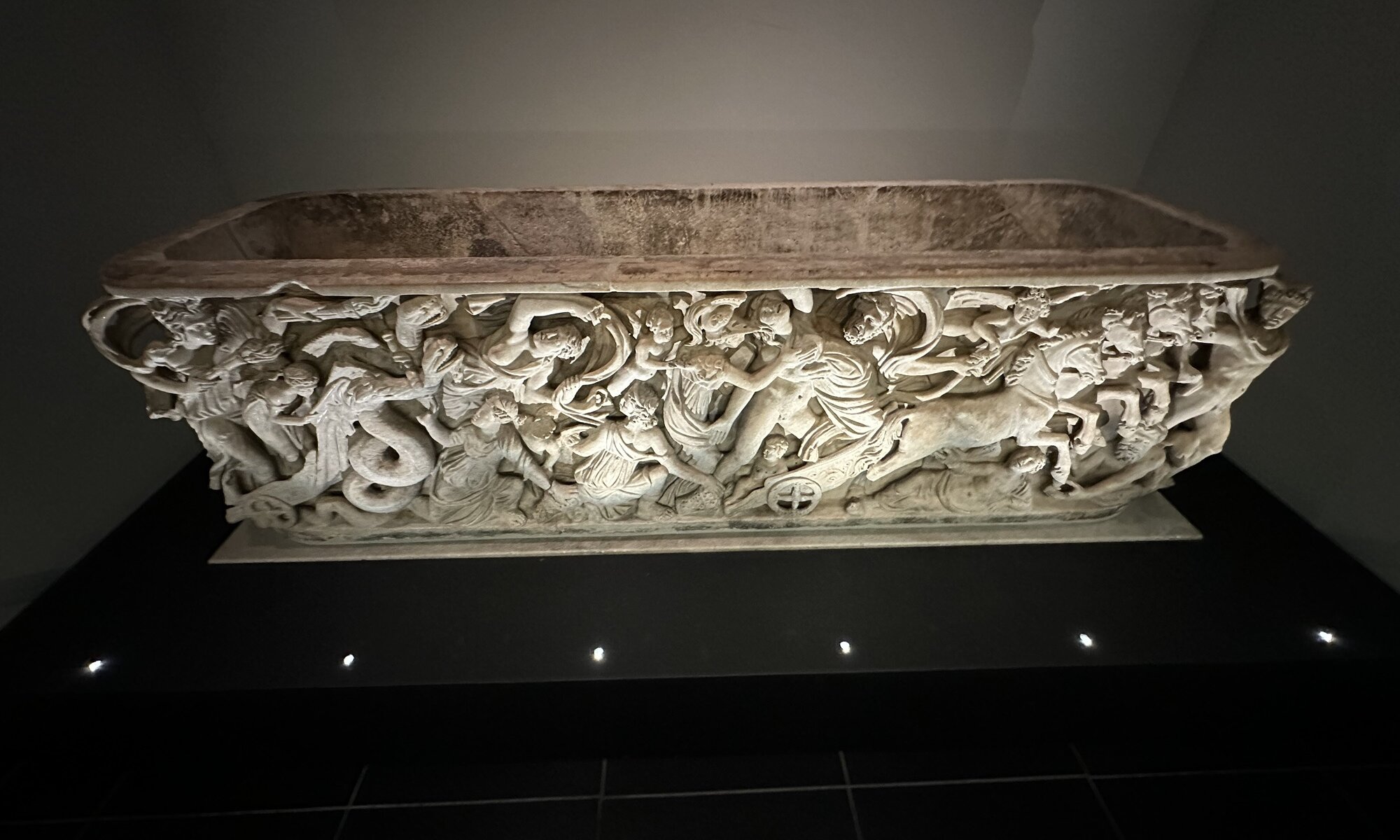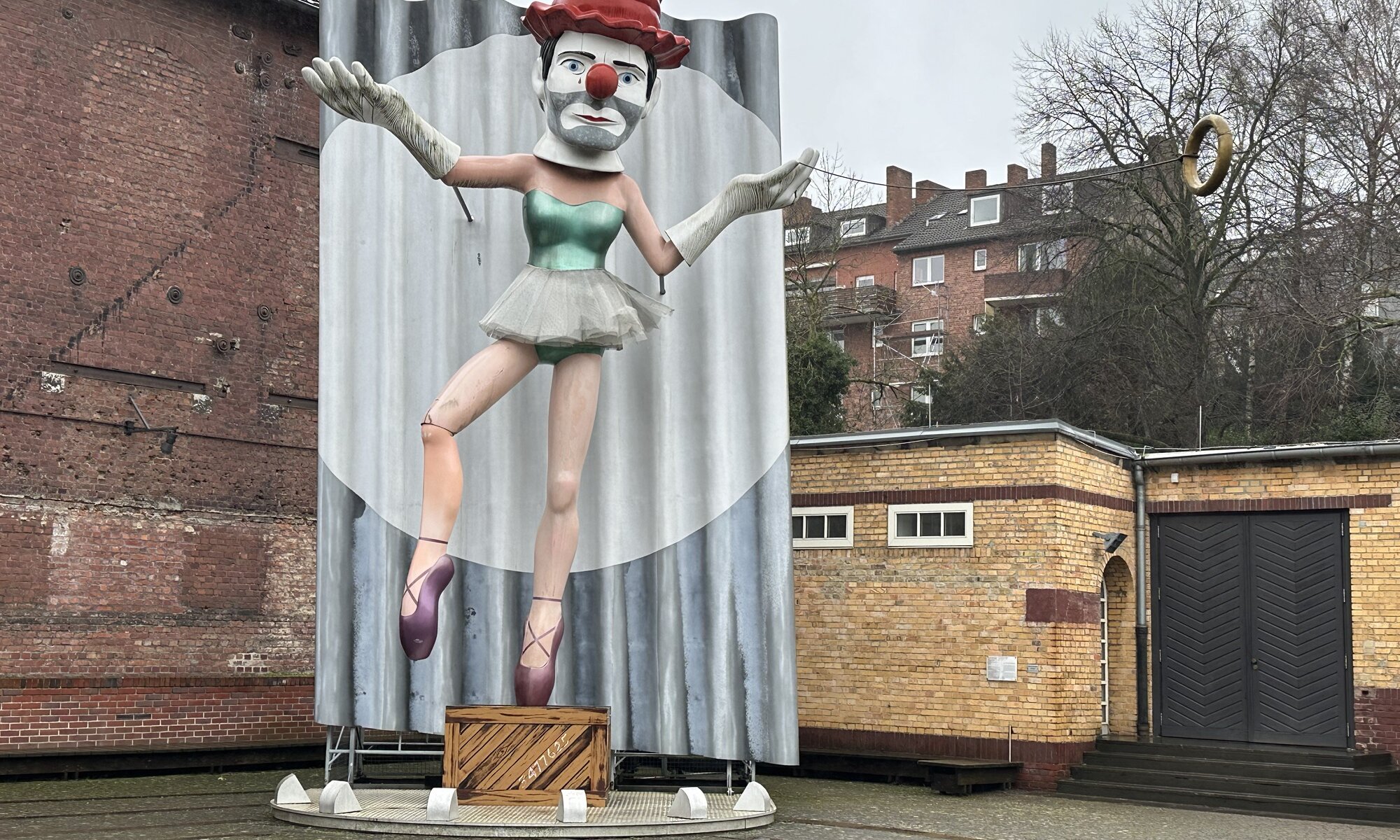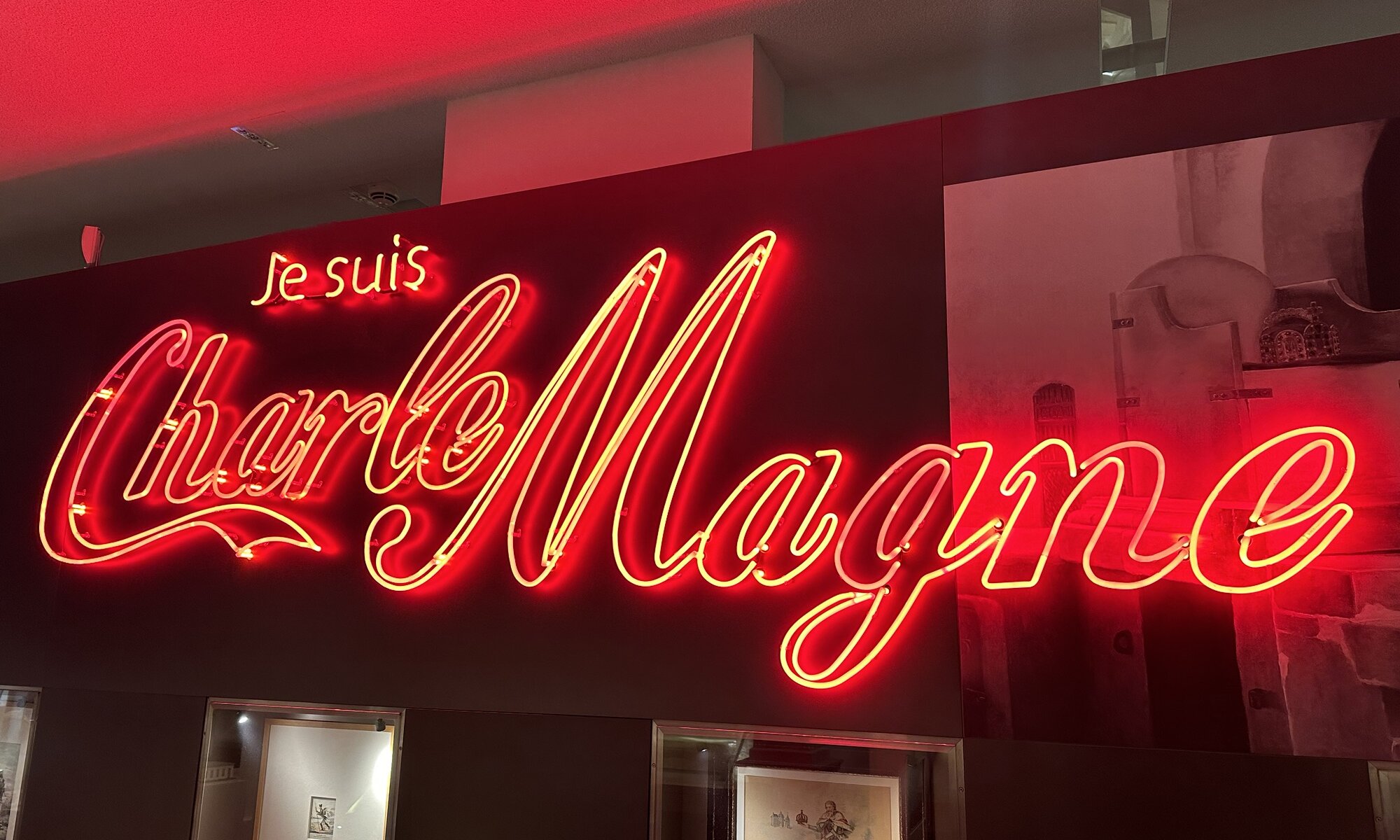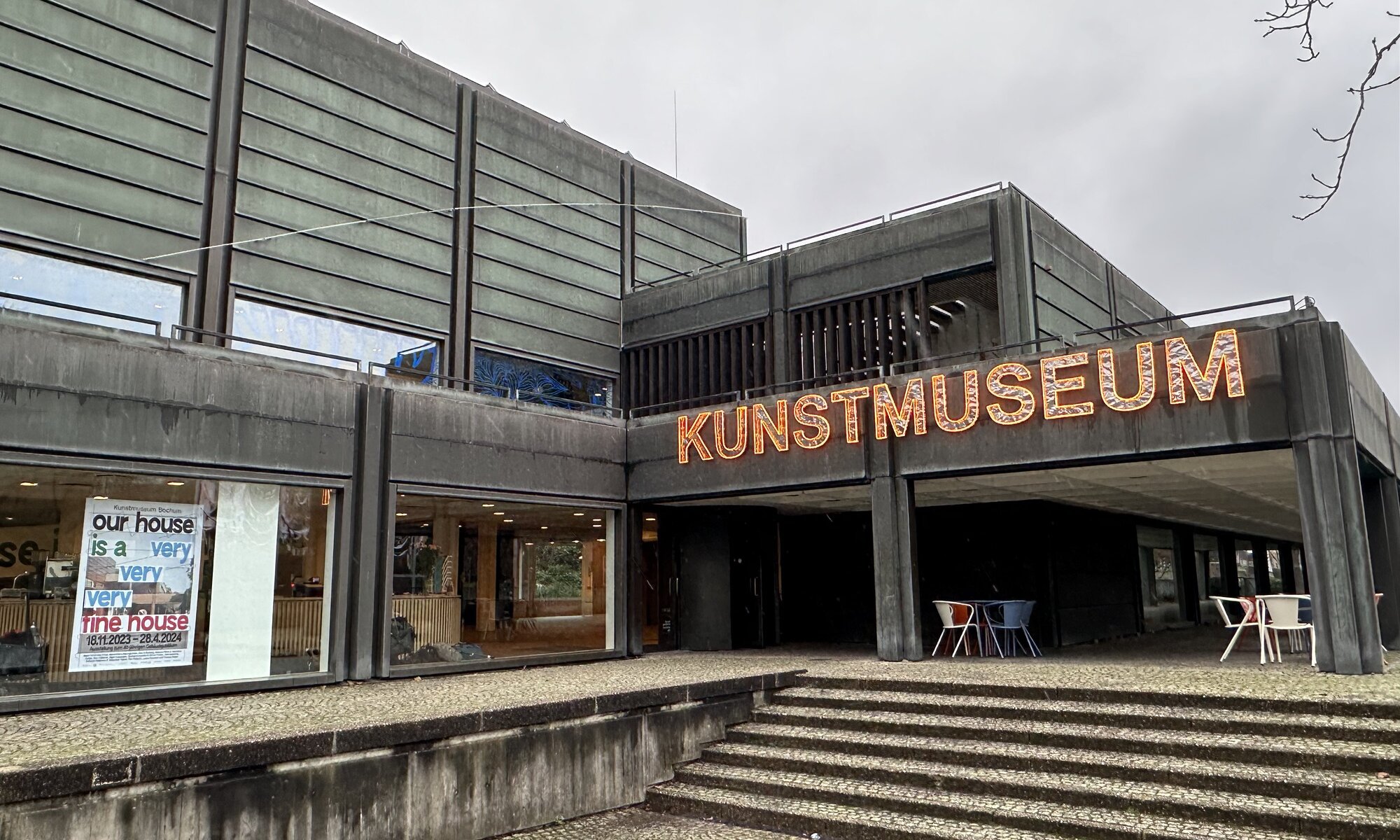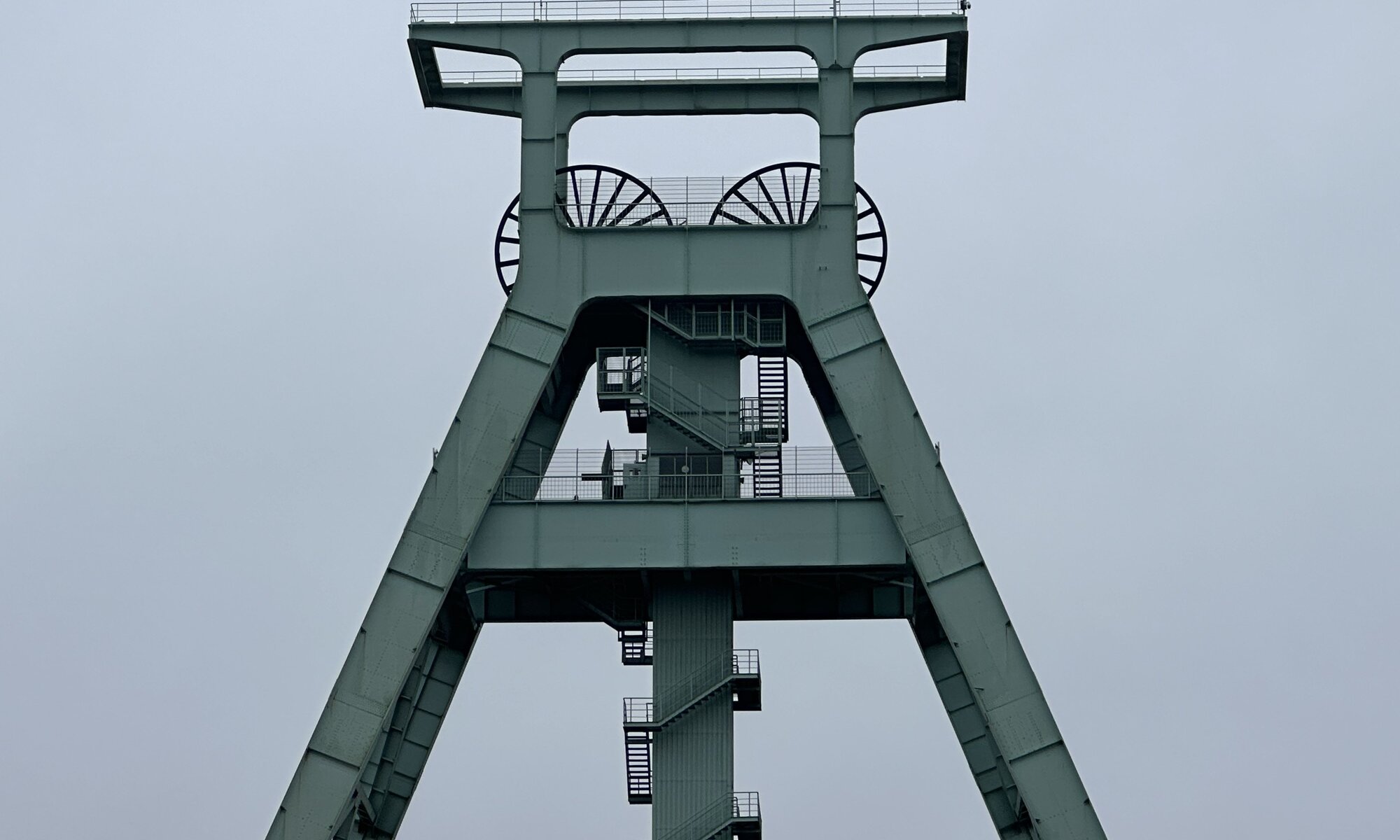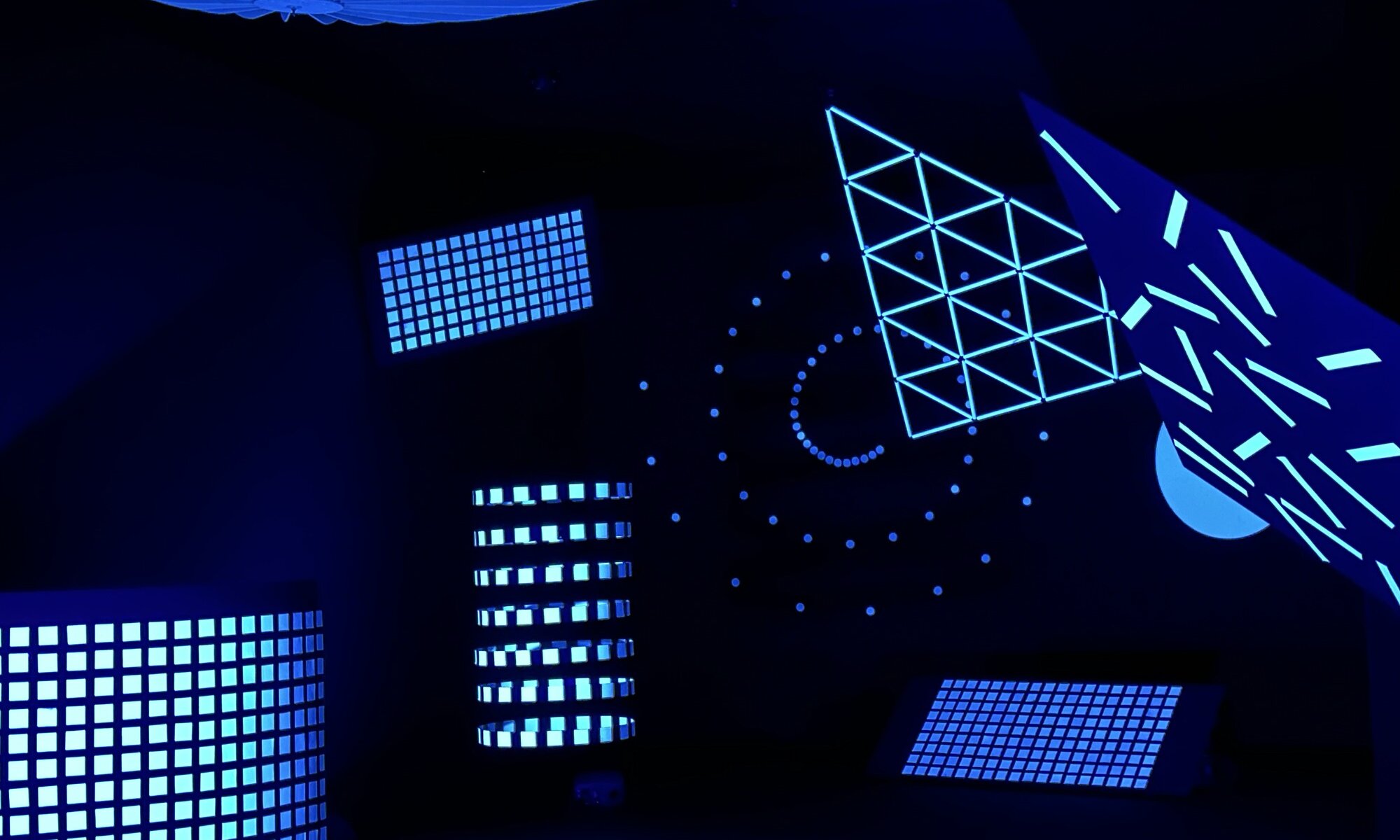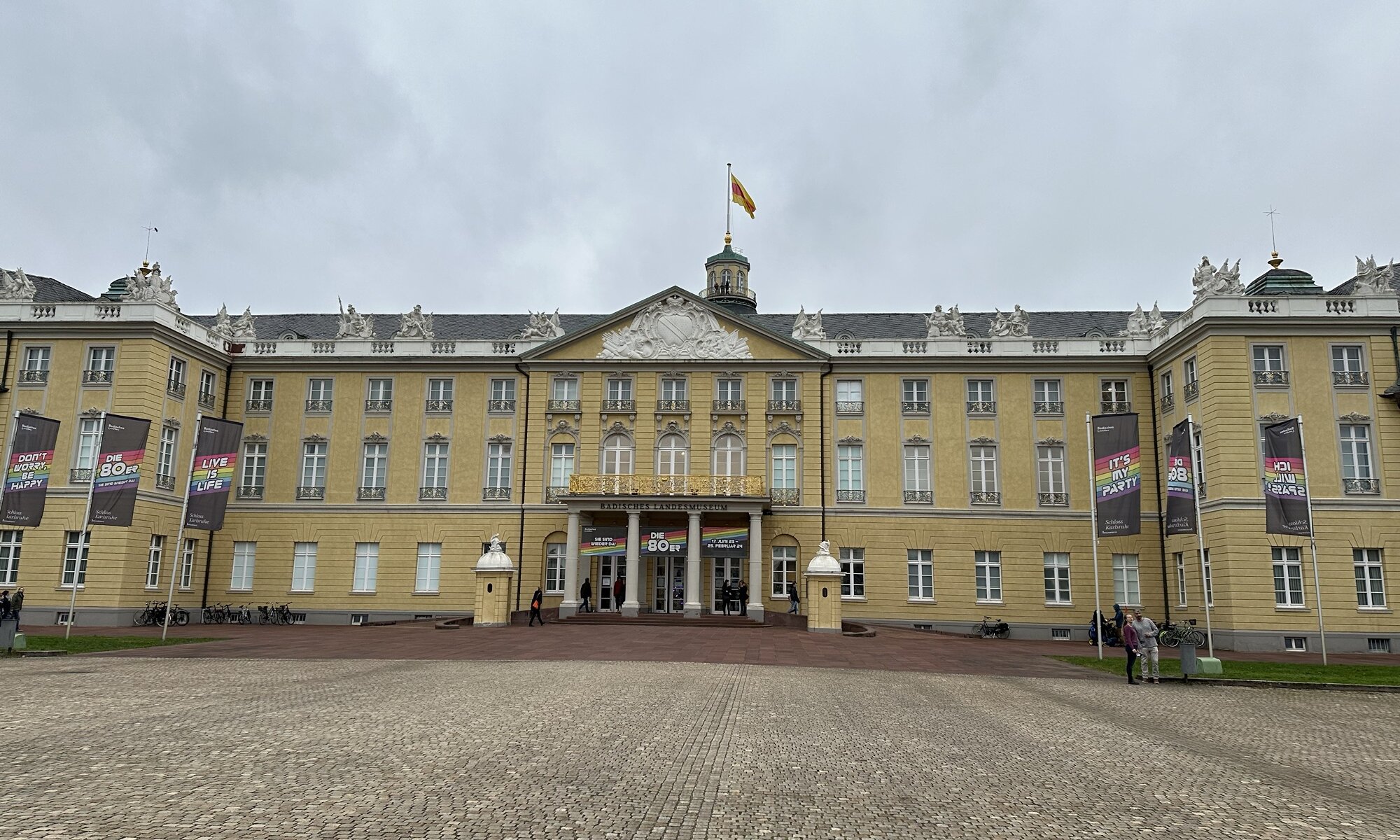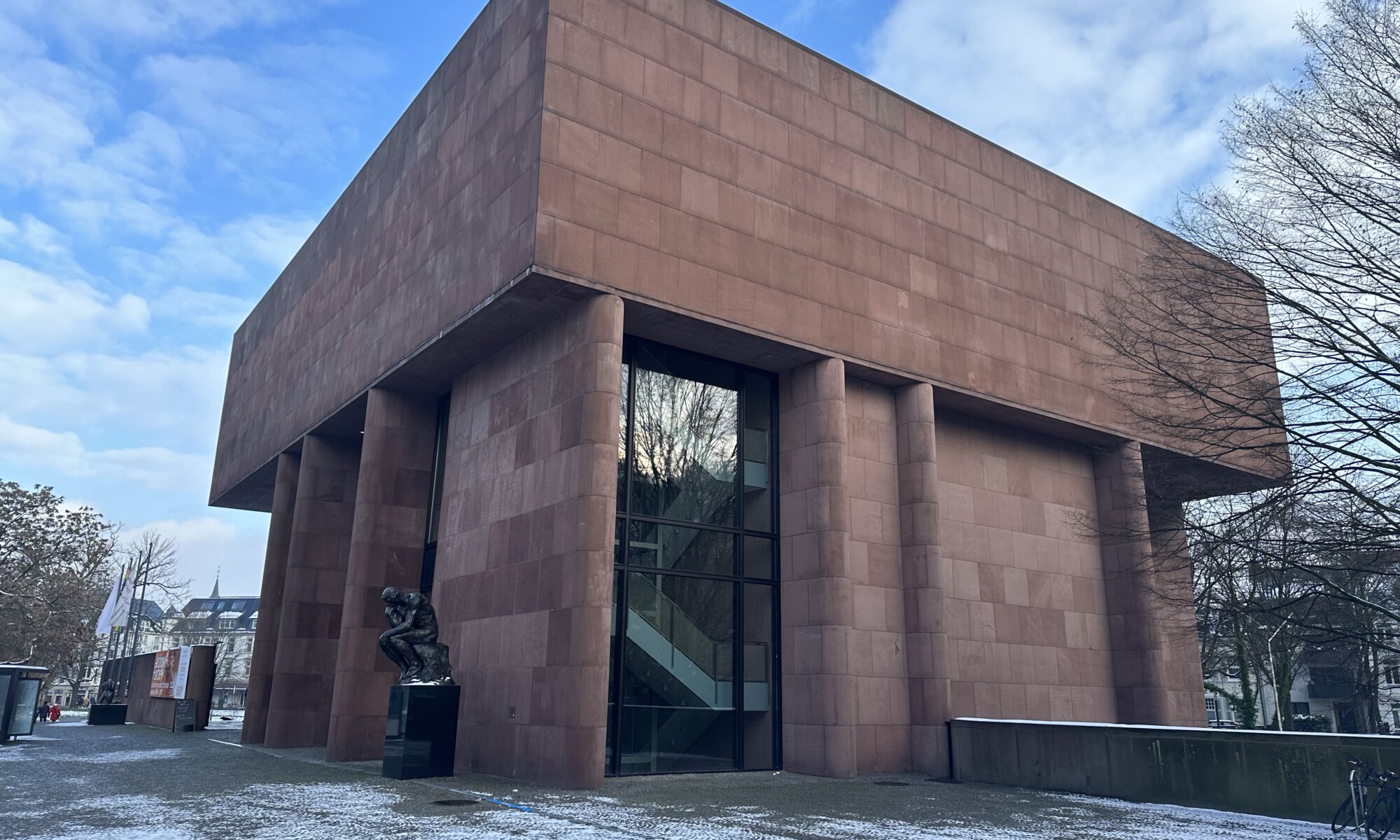The Suermondt-Ludwig-Museum (or short SLM) is the museum I liked most at Aachen and that is quite a surprise as large parts of the museum are filled with Christian art. It was founded in 1883 and is named after the entrepreneurs Barthold Suermondt and Irene & Peter Ludwig. First located in the Comphausbadstraße it can be found since 1901 at the Villa Cassalette at the street surrounding the city center and rather close to the main railway station. Within this wonderful building you can find paintings and sculptures from the 12th to the 18th century staged in a great way. A masterpiece are the many illuminated glass paintings.
Continue reading “SLM”Domschatzkammer
Due to the special role of Aachen in history the cathedral treasury is filled with many important items, gold and jewels. It is said to be the most important religious treasury north of the Alps and contains busts of Charlemagne, the golden reliquary that was used to store is hand after canonization, his coffin (the proserpina sarcophagus) and the ferula of Saint Peter. Even if you’re not a religious person it is worth to have a look into this well-secured treasure box.
Continue reading “Domschatzkammer”Couven
Johann Joseph Couven was an architect who created many churches, castles and villas in the area of Aachen. He was mainly working in Rococo and Baroque style and Couven was for example responsible for the redesign of the town hall building of Aachen including the market place in front and the Karlsbrunnen fountain. The Couven-Museum is located in building designed by his brother Jakob Couven: the Haus Monheim at the Hühnermarkt in the city center.
Continue reading “Couven”Umbrella factory
Since 1882 the Schirmfabrik Brauer was manufacturing umbrellas at Aachen. Between 1928 and 1984 the factory was located in the Jülicher Straße close to the city center. The factory building was created in New Objectivity style connected to Bauhaus, an amazing architecture including a saw-tooth roof typical for these times. And it is therefore no surprise that since 1987 the building is a protected heritage – but what to do with an historic factory that costs money to be preserved over time?
Continue reading “Umbrella factory”Centre Charlemagne
The history of Aachen is rich: from hot springs to the Romans, from the most important personality Charlemagne to the Karlspreis recipients, from the Treaty of Aix-la-Chapelle in 1748 to equestrian sports. For sure a city like this has its own city museum and in this case it is named Centre Charlemagne. It was opened in 2014 at the Katschhof between the cathedral and the town hall building.
Continue reading “Centre Charlemagne”Kunstmuseum Bochum
The art museum of Bochum was created as the Städtische Gemäldegalerie already in 1921. After residing in different locations and having exhibition at various places the museum did a restart at the Villa Marckhoff-Rosenstein (built in 1900 for two influential families) in 1960 and this building was extended with a modern building in 1983. Today the modern part is used to exhibit changing exhibitions of modern art.
Continue reading “Kunstmuseum Bochum”Glück auf
Getting to the Ruhrgebiet is always a good opportunity to learn about mining history in Germany. For hundreds of years coal and ore have been gathered here from the ground, driving industrialization and creating a special culture with its own traditions. If you’re interested in modern mining technologies you should visit the Deutsches Bergbaumuseum at Bochum. It is a combination of a classic museum, a research institution and a demonstration site: by elevator you can go down and explore modern mining machinery within a mine.
Continue reading “Glück auf”ZKM
At the city quarter Südweststadt of Karlsruhe you can find a vast industrial building that was used as an ammunition factory in the past. Since 1989 it is the home of the ZKM, the Zentrum für Kunst und Medien; a fantastic place that is hard to define: it is a museum, an exhibition hall, a scientific institution, an event location – or an indoor playground for people interested in art and media. It shows contemporary art and it preserves digital art. You can play computer games, discover modern art and explore technology.
Continue reading “ZKM”Schloss Karlsruhe
The city layout of Karlsruhe is special: when looking at a map you can see a giant circle in the city center. In its middle you’ll find the castle with the castle tower. From there 32 streets radiate out giving the city the nickname of the ‘fan city‘, the Fächerstadt. The city was founded in 1715 and in that year also the construction works of the Baroque-style castle started. It served as the seat of margrave Charles III William of Baden-Durlach and was a residence until the year 1918 when the Grand Duchy of Baden was abolished.
Continue reading “Schloss Karlsruhe”Abstraction
The Kunsthalle of Bielefeld is a surprisingly large exhibition hall with a special style: it was built in 1968 in International Style (a modernist architecture style developed in the 1920/30s) by architect Philip Johnson from the United States. It is the only building in Europe designed by him. The Kunsthalle is an art exhibition hall with changing exhibitions, but it also owns an art collection from the 20th century.
Continue reading “Abstraction”